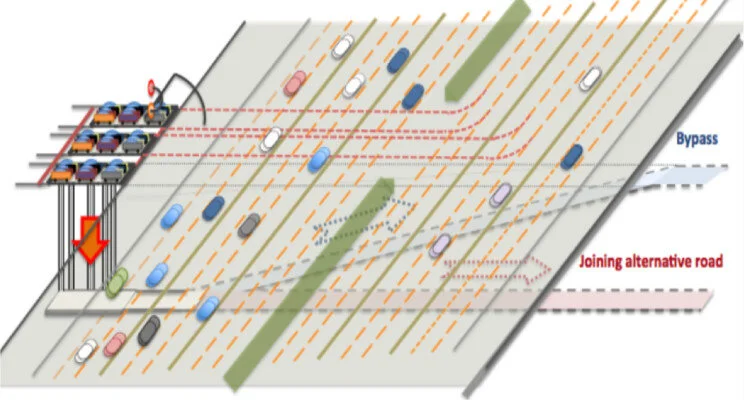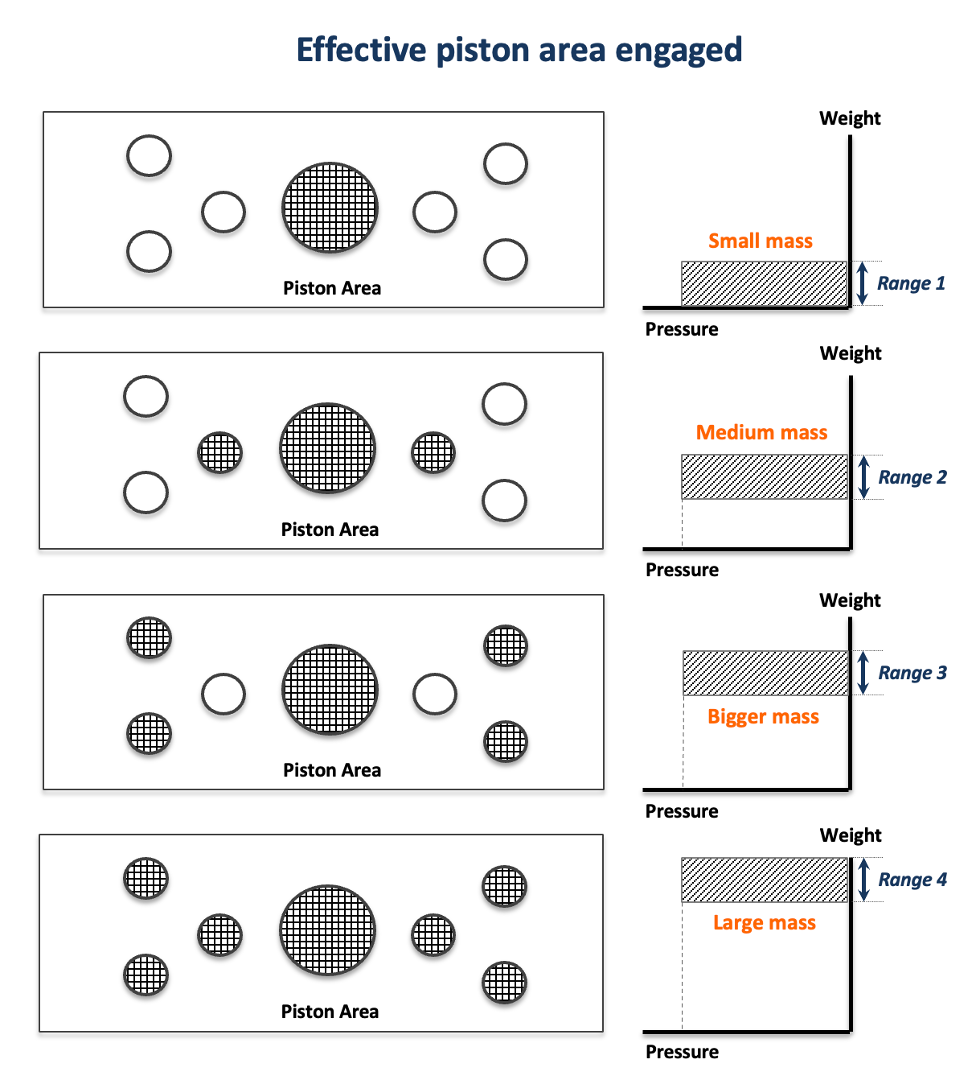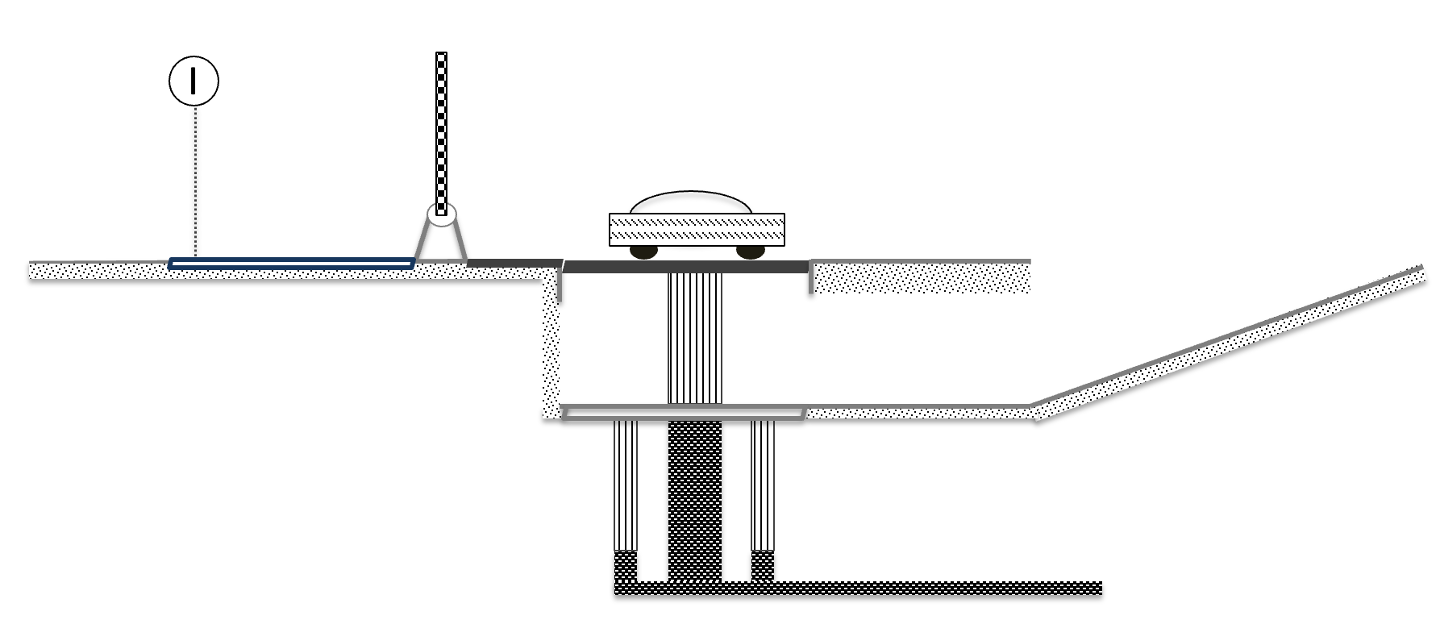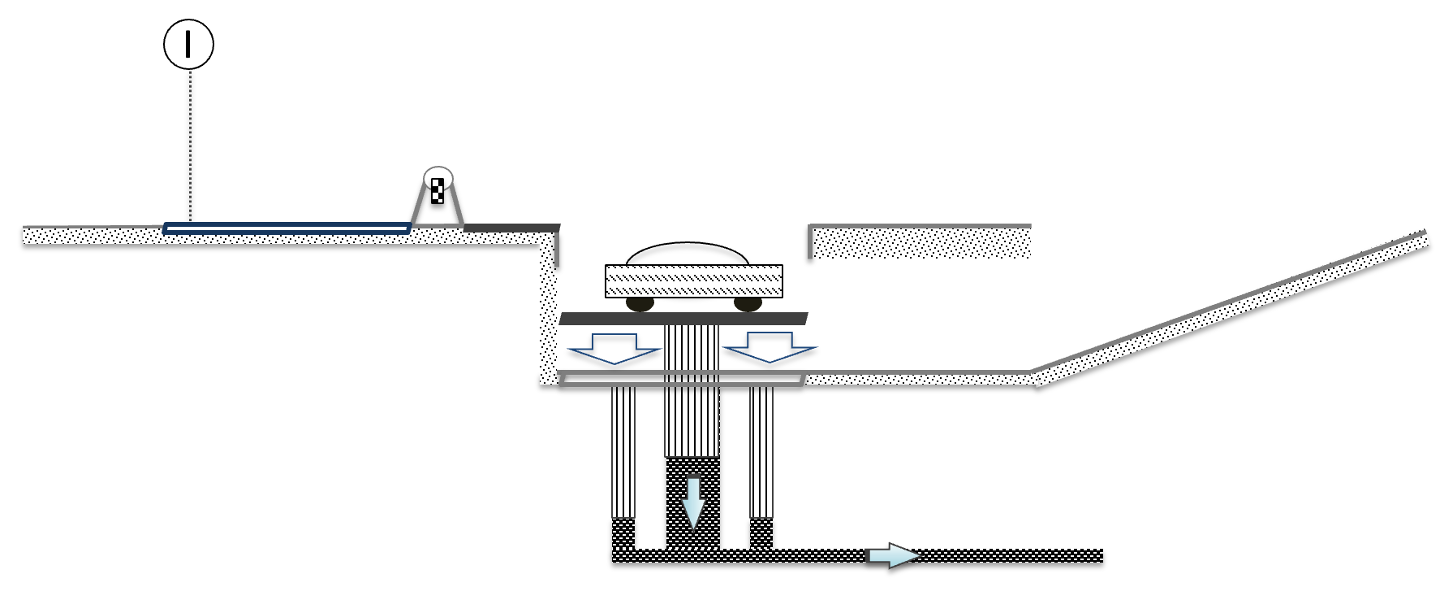GSTAW, power produced from an outstretched hydraulic jack...
Renewable energy, such as solar photovoltaics, wind turbines, hydroelectric, etc. employ the energy provided by natural physical phenomena as their primary source. In most cases this is directly converted into electricity in a continuous fashion until the availability of the given source is interrupted (e.g., the day is overcast with limited sunlight or after sunset; the wind blows insufficiently or too intensively, etc.)
The GSTAW concept, which stands for 'electrical Generation and energy Storage based on Active Weight' (Patent No. 201630890) is in a strict sense a renewable energy technology, but with its own distinctive features when compared to conventional renewables.
Instead of the primary energy source being extracted from the natural elements (geothermal heat, sun radiation, wind, tide, etc.) it is harnessed as part of the mobility process proper.
The energy captured in the form of potential energy is not converted directly into electricity, but is stored for conversion over a certain period of time, according to demand. The system hence undergoes two processes:
· Energy Storage Phase (buffering): Potential energy yielded by the active weight is transferred to a pressure accumulator - loading mechanism.
· Energy Conversion Phase: Potential energy accumulated is liberated to generate electricity - unloading mechanism.
Pressing Power - Energy Storage Phase
Based on Pascal's principle, the system works analogously to a hydraulic jack with unit volumes of incompressible fluid being successively transferred to a certain pressure between two communicating vessels.
The ‘active weight’, as it is identified here, comprises a motorised vehicle (single or bundled in multiple units) of any sort. This mounts on a platform, which in virtue of its own weight (payload) forces a piston down, injecting a fluid inside a pressure accumulator that makes its ingress bottom up.
The accumulator is a cylinder with a diameter larger than that of the piston cylinder and mounts a dead weight that sits on top of the injected fluid. The pressure is thus exerted by two opposing forces, the active weight payload at one end and the dead weight inside the accumulator at the other.
While pressure is equal on both communicating vessels during the injection, the force is proportional to the difference in diameter between the vessels and has a multiplying effect as it increases, which explains how a small vehicle can lift a dead mass several times heavier (as occurs in a hydraulic-jack).
Appropriate valves upstream and downstream of the accumulator ensure fluid confinement while maintaining the design hydraulic pressure within the accumulator. The pressure accumulator is essentially an energy buffer and can be considered as "canned hydropower", where fluid injection (pressure force) and energy storage occur simultaneously.
Energy Conversion Phase – Electricity Generation
At a designated time (i.e., when demand for electricity is high) the control valve downstream to the accumulator is opened, liberating the fluid inside. The dead weight lowers exerting constant pressure on the fluid that is converted into usable head to power a hydro-turbine / generator set, thereby generating electricity. Passed the turbine, the fluid is discharged into a recovery tank from where it is recirculated to refill the piston cylinder(s) and in the same operation lift the platform free of weight to complete the cycle.
Since the energy conversion phase takes place at the point of potential energy capture, the system naturally agrees with a 'distributed energy scheme', with direct savings that result in power transmission losses avoided associated to conveying power from remote locations where otherwise electricity is typically generated. In a widely developed form, the system is coherent with multiple stand-alone generating units that can be integrated as part of an interconnected smart grid.
The Basic Concept
Loading takes place in discrete displacements of injected fluid into the accumulator, while unloading with the continuous discharging of fluid from the accumulator, across the turbine through to the discharge tank.
For both processes to take place simultaneously and attain a continuous charge-discharge operation, it would require at least two accumulators operating at a time in an alternated manner; extending to a combination of multiple accumulators with operation in sequence and / or parallel, according to demand requirements.
Interlocking
Accumulators 1 and 2 are here charged and discharged alternately and synchronically. Two accumulators are used to illustrate the operation, but more than two can be envisaged, with the volumetric charging and discharging capacity not necessarily symmetrical as they are demand-dependent.
A valves open or close completely (binary response); the opening allows to charge the accumulator, while the closing occurs when the accumulator is full or (if more than two accumulators) the filling of another accumulator is prioritized.
B valves are regulated according to the required power conversion and open to egress the liquid from the accumulator. The dead weight pushes (exerts pressure on) the liquid out of the tank.
C valves (upstream of the turbine) have a regulated opening to modulate the flow charging into the hydro turbine. However, this is a representation of the inlet guide vanes that can be incorporated in the hydro turbine for self-modulation, allowing it to respond to specific power generation requirements. Because they are fitted one after another, B and C valves maintain the same modulation, i.e., they allow or restrict the same flow.
Design Considerations of the Loading Phase
As the cars are of very different sizes, the active weights involved in the charging phase have varying mass, requiring a control system that modulates the injection geometry so that the force-over-area ratio of the piston - which constitutes the injection pressure - is capable of overcoming the pressure in the accumulator and the fluid make its ingress.
If the active weight consists of conventional cars, the mass of successive cars (hence the payload) would vary substantially depending on the type of cars, i.e., from small two-seaters to large SUVs. Similarly, the payload of a bus, train or streetcar is highly dependent on the number of passengers. Arguably, every 15 passengers add up to 1 ton.
A lower active weight will produce a lower injection force, which, in order to maintain an equal pressure, will have to be compensated by reducing the effective piston area.
The back pressure to overcome by the fluid to enter the pressure accumulator remains more or less constant despite the hydrostatic pressure of the accumulated fluid, which increases with the filling of the tank. However, even when full it is modest compared to the fixed pressure exerted by the mass sitting on top. The pistons can also be concentric:
First stage
The vehicle is mounted on a weighbridge to measure its weight. This data is sent as input to the controller, which according to the weight (gravimetric force) will engage the number of pistons within the range to equal the required pressure, according to the relation Pressure = Force / Area.
In this case it is a small car, thus requiring only a single piston. The controller sends an output signal to actuate on valve B. The valve is opened admitting fluid that is conveyed from the reservoir to the piston concerned. The reservoir is pressurized slightly (or a pump is started) to lift the piston with the unloaded platform; alternatively, the reservoir can be placed in a higher position so that gravity lifts the piston / platform. The piston rises completely until it is fully stretched and the platform is at par with the floor beneath the automobile.
Stage 2
Once the position of the platform is confirmed to be at the upper level the barrier rises and the vehicle can proceed to be positioned on top of the platform.
Stage 3
The valve in the fluid line feeding the pressure accumulator now opens and the weight of the vehicle acts as an injection force along the piston. The piston or pistons push the fluid into the accumulator at the pressure required to make its ingress, thereby concentrating a unit of stored energy.
Stage 4
Once the platform reaches the lower position, the vehicle leaves the platform and drives up an upward slope to recover the original level.
A pressure sensor upstream of the valve that discharges to the accumulator is an alternative to the weigh-bridge. The signal is sent as an input to the controller which will determine the effective piston area required to meet the pressure inside the accumulator, whilst a second pressure sensor inside the accumulator can provide a reference pressure reading. A check valve (anti-return valve) is placed downstream of each actuated valve to decouple both vessels, avoiding fluid flowing back from the accumulator to the piston when the platform mounts no load on top.
Active Weight
The primary source of energy is regarded here as 'active weight' to distinguish it from a dead weight, which to regain the original height correspondingly to the platform at level zero needs to be towed or lifted.
Unlike a dead weight, active weight regains potential energy in virtue of the inner mobility obtained from its powertrain, consisting of either an internal combustion engine or an electrical motor. The ascension to the original level is carried out along a progressive slope. The arrangement therefore entails a topographic modification. Described in prosaic terms, active weight can be thought of as ‘weight on wheels’…
Once the active weight (car, bus, tram, metro, cargo truck, train...) has completed the descent and abandons the platform it is disengaged from the cycle, with the mass only contributing to the loading energy process. The vehicle then regains the original height through a ramp, as it normally takes place in any urban environment. Arguably, the topographic characteristics within the urban commuting context, with fortuitous successions of ascending and descending roads is a variable that is stochastic in nature.
The descend can respond to the need of bypassing a road or avenue from beneath (A), or simply joining a lane that runs along a lower level (B).
Injection: Highest Energy Yield
Energy is the product of the volume transferred by its pressure. To obtain the highest yield, the injected volume must be stacked vertically, so that the lower the active weight falls the more energy is extracted. This implies that some potential energy must be given off, while (height) recovery over a long stretch ahead becomes residual in principle.
Accumulator Loading - Energy Storage
Buried Accumulator
The accumulator is located at a lower level with respect to the column of fluid displaced by the piston. The resulting hydrostatic pressure adds up to the useful total injected pressure that can be later converted to increased electric power.
However, because the deeper water is discharged the higher must be pumped back up the advantage in power (kW) does not translate into energy (kWh). The net energy obtained then comes exclusively from the contribution of the volume and pressure of the fluid in the accumulator.
By being placed underground it also has the inherent advantage of not taking up useable outer, i.e., commercial space.
Applications
As pointed out, instead of harnessing the energy from naturally occurring phenomena, i.e., wind, photons present in sun rays colliding against atoms (photovoltaics), sun radiation, water chute, sea water movement, heat from the soil, heat from biomass-sourced fuels, etc., as in conventional renewables, the primary source of energy here comes as part of a ubiquitous and repetitive process that yields potential energy as byproduct.
TThe four variables which are relevant in the power / energy transfer are:
The mass of the active weight (vehicle), which provides the gravitational force – payload – that exerts pressure on the fluid.
The length of the piston, which makes up the volumetric fluid injected into the accumulator. The smaller the diameter, the higher the pressure. Therefore, for a greater combination of volume and pressure a long, thin piston cylinder is preferable to a thick, short one.
The frequency of descending vehicles in a giving period, e.g., 4 hours – recurrence, being the sum of all discrete volumetric units stored in the pressure accumulator.
Replication of multiple generation units that agrees with a 'distributed energy scheme'.
Urban underground commuting / Transport
Commuting underground in today’s cities takes place amidst a context of gentrification, with compounding problems of traffic jams that generate pollution in diverse forms and also become overly time-consuming; a transit inefficiency that ultimately generates a hefty economical, social and environmental burden.
Transit is normally distributed two dimensionally, that is, at ground level across the urban space (or in periphery rings) with capacity that becomes increasingly limited as the density of inhabitants increases.
Diverting the traffic vertically contributes to better organise the ‘logistics’ of a city, providing alternate routes to avoid traffic congestions. A recent example can be found in the so called 'second floor' (although some sections run in multiple levels) built across Mexico City, which has ostensibly helped alleviate the otherwise completely saturated intra-urban transit roads.
The road running closest to the surface serves to connecting adjacent neighbourhoods and therefore has more frequent exits and joining points, while the deepest roads connect widely separated points of the city, in this case with exits and joining points that are spaced farther apart.
Additionally to better distribute urban transit its limitation to the outer space is also achieved. By maintaining vehicle transit in the outer space to the bear minimum this can be used to more accommodating purposes (i.e., green zones).
By having a slight upward slope, highways running subway also prevent fatal accidents due to milliseconds of loss of attention and consequent reaction, during which the car brakes instead of releasing inertia.
Toll Booth
In October of 2015, during the Chinese National Day celebrations, known as 'Golden Week', 30 out of 50 lanes of one of China's busiest highway were shut, leading to a collapse in car circulation that lasted 30 hours, as many as 750 million people were stuck in the worst traffic jam ever known.
Daily influx of vehicles in major cities and across main highways is usually high the whole year round. At the entry of main cities, platforms can be facilitated to bring groups of vehicles to designated roads running underground via single car platform or bundled platforms. Likewise, independent lanes can serve bigger vehicles, such as freight trucks or coaches.
Platform descents can be made periodically - i.e. every a certain number of minutes - from areas containing platforms, spaced a few hundred meters apart, depending on the area of the city to be reached.
Parking lots with great affluence
Big out of town shopping malls in Europe, e.g., Bluewater, in the U.K., typically attain around 75 thousand visitors any given day. Estimating that 70% arrive by car and averaging 2.5 occupants per vehicle. That makes some 21 thousand cars daily average; oscillating from 15,400 on a given Monday to 36,400 on a Saturday.
Likewise, Airports as well as – beneath – big corporate buildings in major cities have parking lots of massive capacities, where conventionally apply long term, short term and economic tariffs (less than 3-hour stay) that result in constant entry and exit of vehicles throughout the day. Private transportation units can easily go beyond 40 thousand vehicles per day in the airport of a city of normal size in the USA and to a similar figure in many cities in Europe / Asia / Australia.
The entrance to the underground parking lot is from street level to the bottom with the platform, thus reversing the "first level" convention. When all parking spaces are occupied at that level, the next parking spaces are accessed by the ascending ramp, as is done to reach the street (exit) level.
In the elevated parking lot, the user also takes the ramp up to look for free spaces. To return to the street, the user must take the ramp to the top and "drop" the car down the platform. A somewhat counter-intuitive movement that nevertheless provides an energy contribution, which can be monetized or for which (green) credits can be received.
Undersea Tunnels
The world's steepest tunnel running undersea is currently the Eiksund Tunnel, in Norway, daily traffic averages 2,880 cars per day, with the deepest point being at 287 meters below the sea.
The Holland Tunnel connecting New Jersey to Manhattan has an Annual Average Daily Traffic (AADT) of over 95 thousand passengers – per day, the tunnel runs at a depth of 28.3 meters.
The Jeju undersea tunnel in South Korea is a proposed tunnel to connect South Jeolla with the island of Jeju. A number of diverse subsea projects are currently under study, such as one involving a connection between South Korea and Japan.
Buckling can occur in very long vertical pistons (implemented in very deep descents, such as the Eiksund tunnel) due to the presence of lateral forces, resulting in an unbalance caused by the structural slenderness of the piston. Therefore, the piston length is limited to achieve a restricted downward axial force.
In these cases, a single platform can be coupled to an alternative set of pistons arranged sequentially every 25 to 30 m depth, or by slightly repositioning the platform supported by pistons in altered positions, with each segment adding to the total power generated.
Public Transportation
Metropolitan urban train (tube), urban trains, buses, trams, etc. Most metros and trams employ steel wheels on steel rails. Less deformation, due to the material hardness, translates in higher coefficient of friction. Static friction coefficient is highest between dry identical metals, which however limits the slope at which the train can travel upwards to an extent where slippage can occur – being also prone to slippage when rails are wet or run over wet leafs.
If the topography is modified to increase the slope to higher than typically 4% a more suitable alternative would be the use of rubber tires, as used for instance in the Paris metro.
A representative distance of 500 meters between stations is here considered. A section of the pathway can serve to gain momentum that assists along the upward stretch, the resulting slope being of 3.58 degrees.
The weight of a vehicle varies substantially depending on the time of the day; in average 15 persons make up 1 ton of weight. During the early morning hours and the evening is when the higher load translates in highest potential energy available.
In certain hours, weights can be added up during the lowering to complete a maximum payload, and be brought back up in dedicated trains...
Daily frequency of arrivals is usually about 5 minutes on a week day for the ‘metro’, the overall number doubles considering that each line covers both directions. In a number of stations (nodes) also converge multiple lines, and / or can have connections with alternative means of transportations (e.g., extra-urban trains) conforming a matrix-like arrangement, all of which adding up to a conspicuous electricity generating potential.
Cargo
It may appear as the obvious choice, given their fundamental role is to carry a payload.
As freight liners deliver to distance locations from the collecting points (harbour), they would enter the lowest tunnels to avoid traffic in the city, according to the vertical urban matrix proposed.
Other rather exotic options
Airplanes take off round the clock...






















